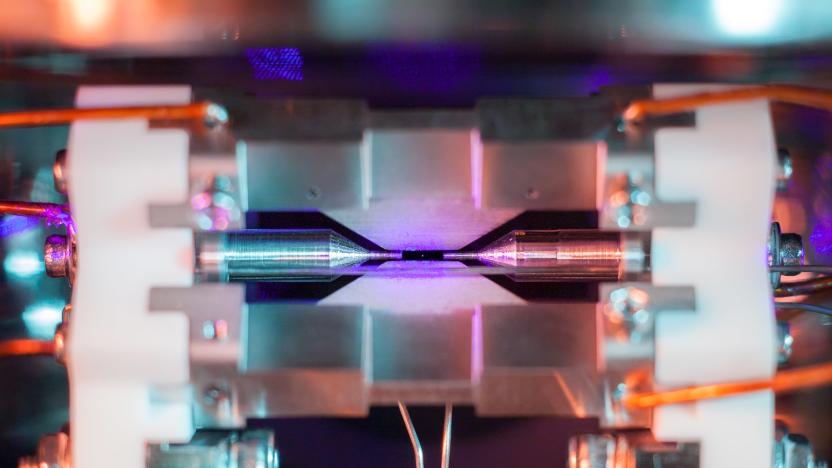EPSRC
Latest

A 'trapped' atom is visible to the naked eye
The tiny dot in the center of the screen, between the two metal electrodes, is the light emitted by a single atom. The photo, Single Atom in an Ion Trap, just won the grand prize in the UK's Engineering and Physical Sciences Research Council (EPSRC) science photo and imaging contest. "The idea of being able to see a single atom with the naked eye had struck me as a wonderfully direct and visceral bridge between the miniscule quantum world and our macroscopic reality," said Oxford University quantum physics professor David Nadlinger, who took it.

Virtual tape measure could find you the perfect jeans with just a webcam
Finding clothes that fit just right is surprisingly tough for a sizable amount of the population, especially when shopping online. E-tailers have used everything from 3D scanners to mailable mannequins to ensure that customers find the best sizes for them, and the truly picky have probably had a friend break out a tape measure to get some exact numbers. A whole team of researchers is looking the simplify this process however, and put the power to easily get the right size at your fingertips. A group, including developers from the London College of Fashion, and experts from the University of Surrey and Guided, have come together to turn practically any camera into a virtual tape measure, including your smartphone or webcam. Since the image you capture has to be taken in your underwear, we wouldn't suggest doing this in public, though. All you have to do is fire up the software, take the pic and punch in your height -- the computer does the rest. With funding from the Engineering and Physical Sciences Research Council the coalition is working to bring the system to market, with hopes of launching within the next two years. For a bit more check out the PR after the break. [Shopping button via Shutterstock]

Active Book microchip provides hope for exercising paralyzed limbs
Scientists have been experimenting with muscles and technology to solve both human and robotic mobility issues for years. Now it looks as though a team of researchers from University College London, Freiburg University, and the Tyndall Institute in Cork have made a significant leap forward for paraplegics, thanks to a revolutionary microchip the team has dubbed "Active Book." What's notable about the chip is that it stimulates more muscle groups than existing technology without the need for external connections. This was accomplished via micro-packing and precision laser processing, which allowed tiny electrodes to be cut from platinum foil and rolled into a 3D book shape. These platinum foil "pages" close in around nerve roots, and are micro-welded to a hermetically sealed silicon chip. Once embedded into areas within the spinal canal, the chip can work to stimulate paralyzed muscles, implying patients could even "perform enough movement to carry out controlled exercise such as cycling or rowing." A press release from the Council which sponsored the research says the Active Book will begin trials sometime next year -- we can't wait to see the results.

